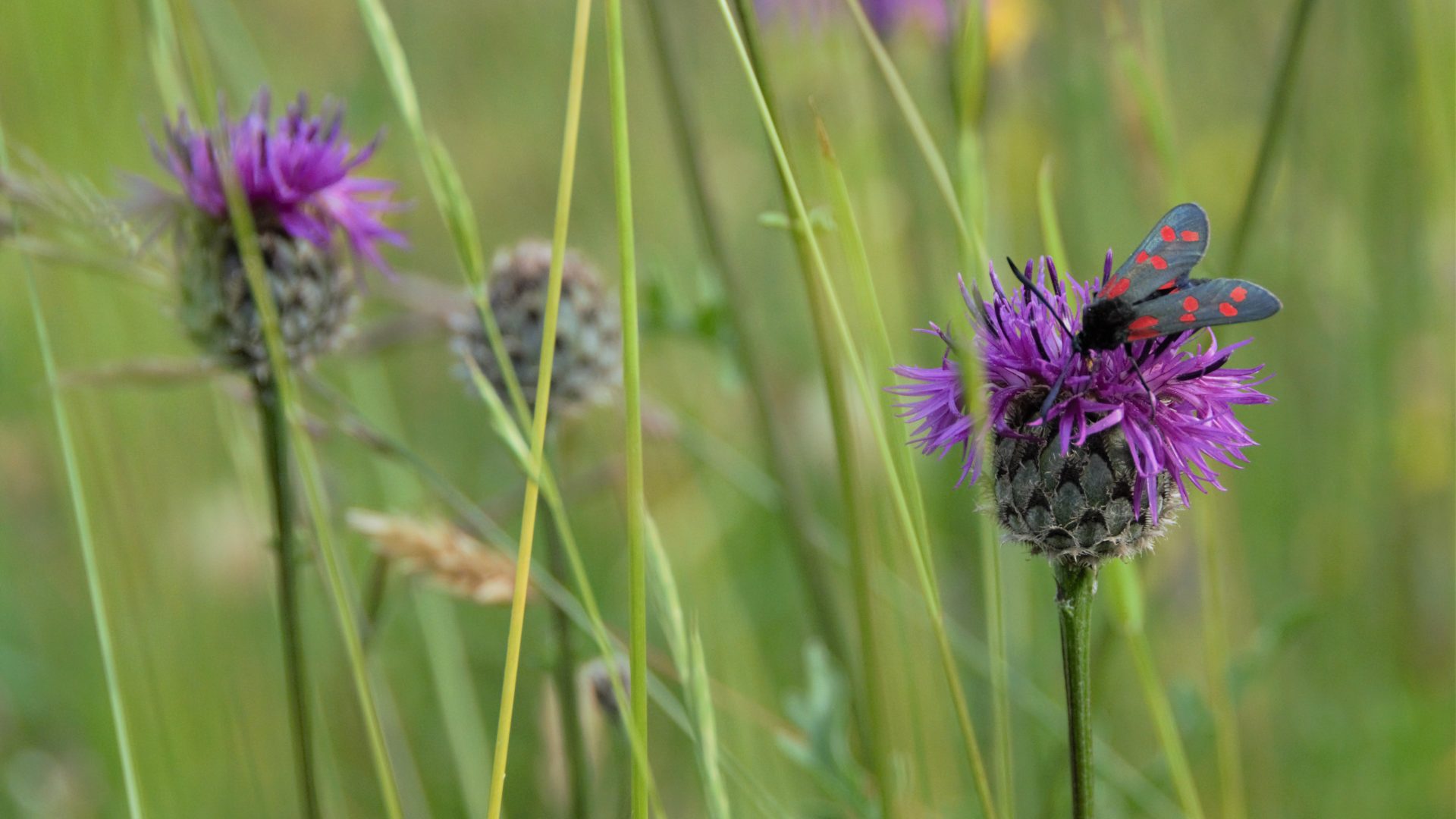
Grasslands – national treasures
Published: 21 August 2024
If the purpose of National Parks is about natural beauty, wildlife, cultural heritage, and opportunities for people to learn and enjoy themselves, then I can think of no better flowery-thread that links them together than species-rich grasslands. They are blooming marvellous habitats, resplendent with life of all kinds – above and below ground. They are home to the evocatively named Melancholy Thistle and Autumn Lady’s-tresses Orchid, or crazily coloured waxcap fungi that have mycorrhizal networks deep in the soil.
The imprint of the relationship between people and land in National Parks can be seen today in their species-rich grasslands, such as hay meadows or chalk downlands. These habitats have been shaped by farming practices over thousands of years and are rich in different wild plants and fungi species. Horses may no longer pull the hay rakes, but the smell of freshly cut hay accompanying the farmer’s hard work has not changed.
Threats grasslands face
However, as farming has become mechanised and intensive, more of these biodiverse grasslands have been destroyed. Many have been over fertilised and re-seeded with more monoculture grass – called ‘improved grassland’. National Parks remain a stronghold for the remnants of more semi-natural and biodiverse grasslands, which make up over a third of their land. Yet even these are still at risk from being ploughed or overfertilized, excess nitrogen deposition, tree-planting or inappropriate development. Despite swathes of National Parks being legally protected as Sites of Special Scientific Interest (SSSIs), their nature is still in decline. Shockingly, SSSIs outside of National Parks in England are more likely to be in favourable condition than within them.
The value of species-rich grasslands
Species-rich grasslands need a lifeline. The paucity of data on their extent and health demonstrates their systematic undervaluation. Whilst being incredibly rare and important habitats, they also bestow a wealth of benefits for nature, people, and climate. For example, species-rich grasslands – with deep-rooting plant communities, legumes, and fungi – can draw down and store vast amounts of carbon in their undisturbed soils.
The ultimate multitaskers, these grasslands are also productive land – and the farming practices that help them thrive are also low carbon. They need no/little fertiliser, which prevents greenhouse gas emissions from the fertiliser’s manufacture and transport, and also prevents pollutants from running into rivers or causing air pollution when it’s spread onto fields. For species-rich grasslands, farming and nature can go hand-in-hand – but farmers need to be supported to continue, or transition to, low-input management. For example, the Farming in Protected Landscapes (FiPL) funding scheme has proved popular and successful, but currently is set to end in 2025.
Time for a strategic approach
Governments across the UK can choose to join the dots between sustainable food production, nature recovery, climate action, cleaner air and water, and flooding prevention, by taking a strategic approach to grasslands. This means actively designing species-rich grassland into policies and funding opportunities, That’s why Plantlife and other organisations, including the Campaign for National Parks, are calling for the UK Government to commit to developing a Grassland Action Plan for England.
Just like our National Parks, our species-rich grasslands are national treasures of landscape, nature, and heritage – they deserve to be valued.
